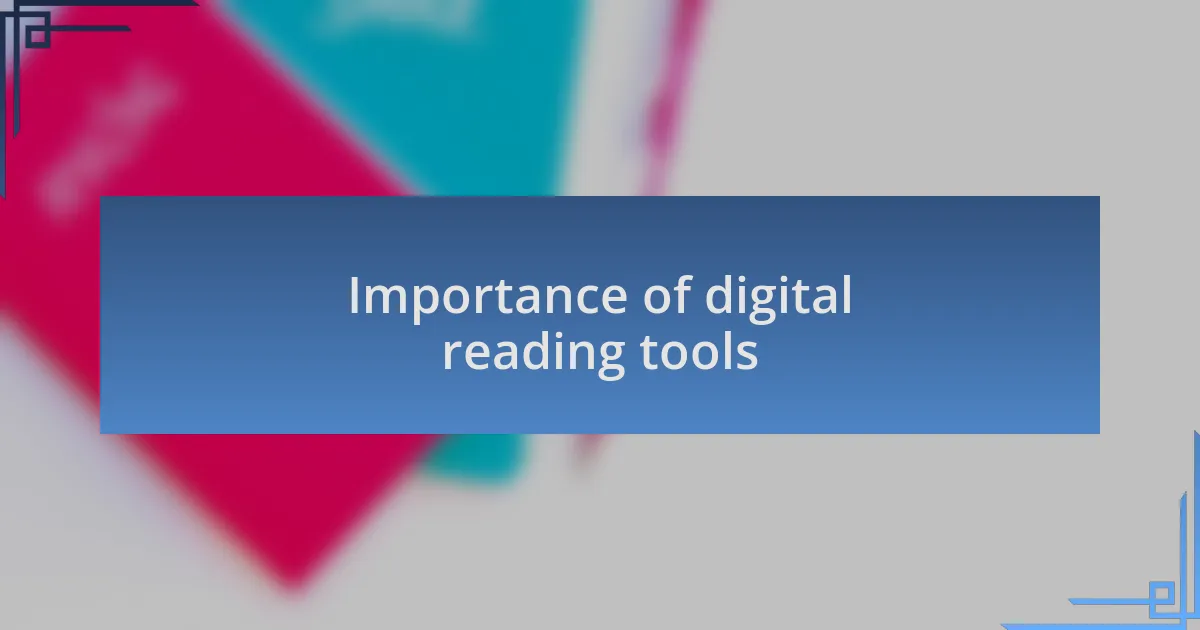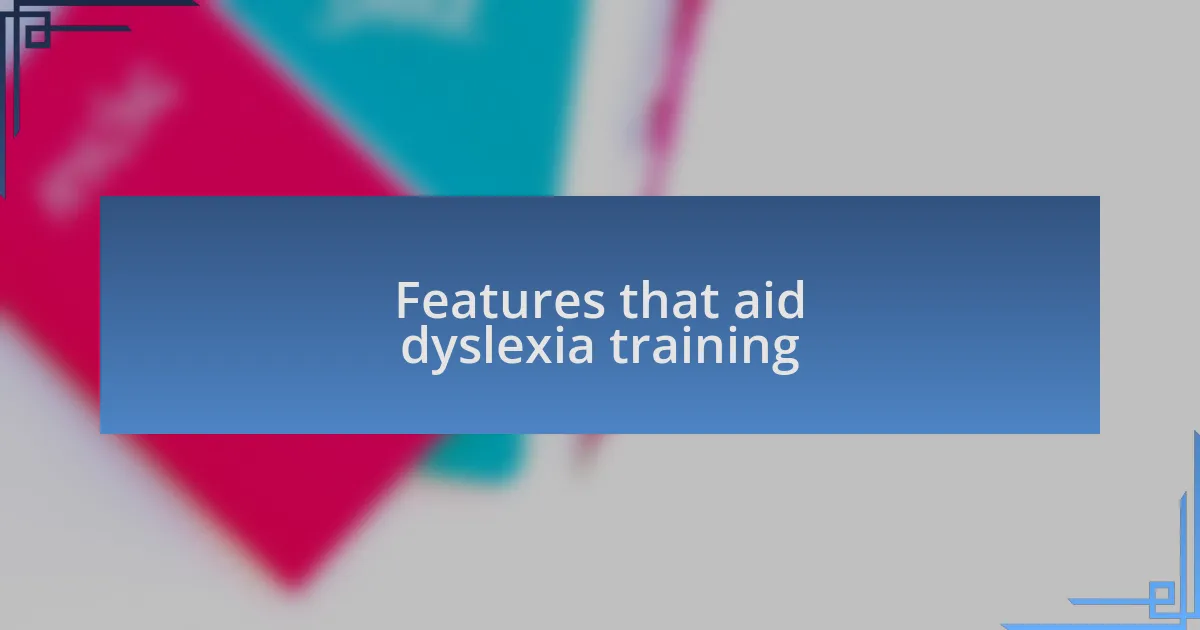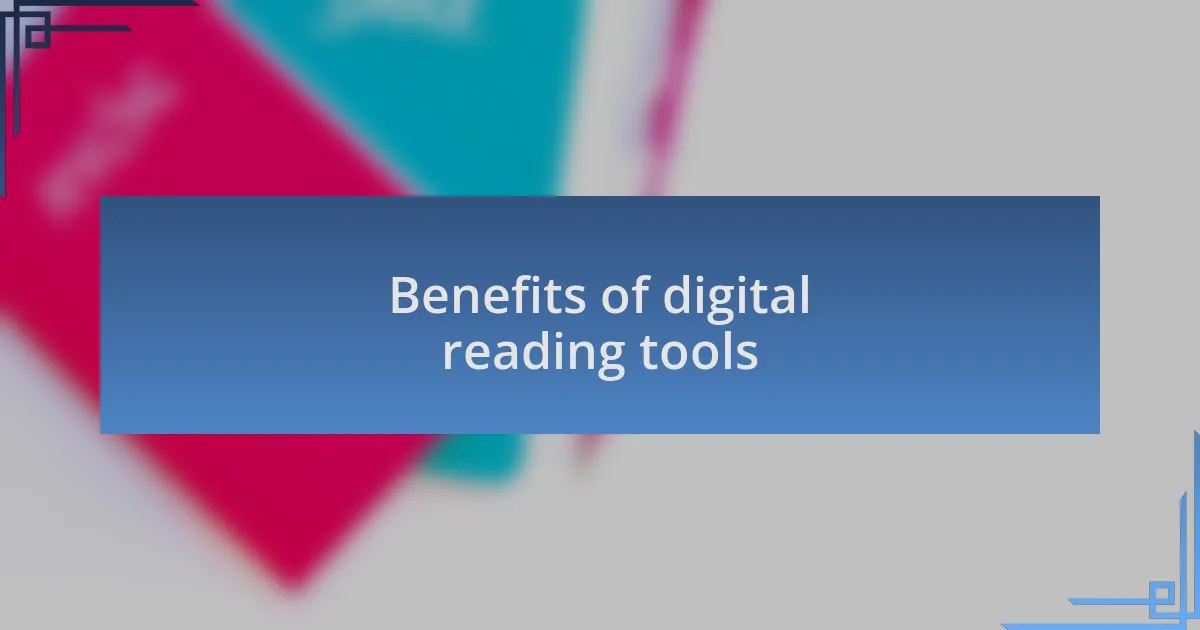Key takeaways:
- Dyslexia poses unique challenges beyond reading difficulties, impacting emotional well-being and self-esteem.
- Digital reading tools, such as text-to-speech software and customizable text presentation, significantly enhance literacy and confidence for individuals with dyslexia.
- Features like audio support and breaking content into manageable chunks aid comprehension and make reading less overwhelming.
- Customizable settings and instant access to definitions in digital tools empower users to engage with texts more seamlessly.

Understanding dyslexia and its challenges
Dyslexia is often misunderstood as simply a problem with reading, but it goes far deeper than that. I remember the first time I struggled to decode a simple word; the frustration felt like an insurmountable wall. Can you relate to the sensation of knowing something is amiss, but not being able to pinpoint exactly what it is?
For many, dyslexia presents unique challenges when it comes to processing language. It’s not just about letters being jumbled; it’s the emotional toll of feeling different and the impact it has on self-esteem. I’ve seen how those stumbles in reading can lead to a wave of anxiety during school presentations. Have you ever felt that tightness in your stomach, anticipating the struggle before you even begin?
The effects of dyslexia can ripple through various aspects of life, from academics to social interactions. As I navigated my own experiences, I found that these challenges made me more resilient. What if the setbacks we face are actually stepping stones to understanding ourselves more deeply? It’s that perspective that can transform obstacles into opportunities for growth.

Importance of digital reading tools
Digital reading tools play a critical role in bridging the gap for individuals with dyslexia. I once discovered text-to-speech software during a particularly challenging semester, and it felt like finding a lifeline. The words that once danced on the page became clear as I listened, allowing me to engage with materials I had previously avoided. Have you ever had a moment where technology unlocked a door to understanding?
What’s fascinating is how these tools can personalize the reading experience. I’ve found that adjusting font size or background color transforms the reading landscape, making text less daunting. This level of customization is invaluable—it’s as if every reader can create their own safe space to tackle language. Does the idea of choosing your reading environment resonate with you?
Utilizing digital reading tools isn’t just about improving literacy; it’s about building confidence. I recall the satisfaction I felt after reading a challenging article independently, thanks to those supportive technologies. This sense of achievement can empower individuals with dyslexia to pursue their interests more freely. Have you ever felt that surge of pride when you finally conquered something that once seemed impossible?

Features that aid dyslexia training
One feature that significantly aids dyslexia training is the ability to alter text presentation. I remember the first time I tried a reading tool that allowed me to change the font to one specifically designed for dyslexic readers. The moment I switched to a dyslexia-friendly typeface, the words seemed to line up so much better, giving my eyes a break and making the reading experience so much more enjoyable. Have you had a similar experience where a small change made a big difference?
Another valuable element is the integration of audio support. I once paired an app that supports visual reading with a reliable text-to-speech feature. Listening to the content while following along on the page not only reinforced my understanding but also made me feel part of the narrative, rather than an outsider. Doesn’t it feel encouraging when you can hear the words brought to life in that way?
Lastly, the ability to break complex texts into manageable chunks has been a game-changer in my journey with dyslexia. I distinctly recall tackling a lengthy report where each section was neatly divided, with summary highlights at the end. This layout allowed me to digest the information bit by bit, transforming what seemed overwhelming into a series of achievable tasks. Have you ever felt relieved when information is presented in a simplified format?

Benefits of digital reading tools
Digital reading tools offer a remarkable advantage through customizable features, enabling users to adapt their reading experience. I’ve often experimented with background color alterations; switching to softer tones reduced glare, which was a huge relief for my eyes. Have you ever noticed how a simple change in color can shift your focus and improve reading comfort?
Another benefit lies in the instant access to definitions and explanations of complex words, which I’ve found invaluable. I remember stumbling across an unfamiliar term in a text, and with just a tap, I could see its meaning right there. It’s such a confidence booster to not have to stop and search for definitions elsewhere—doesn’t it feel empowering to be able to keep the flow of reading uninterrupted?
Lastly, the inclusion of progress-tracking tools has been a huge motivator for me. I find it incredibly satisfying to see my reading habits evolve over time, with each milestone celebrated as a moment of personal growth. It’s like having a personal coach that cheers you on—have you ever felt that surge of motivation when you witness your progress laid out in front of you?